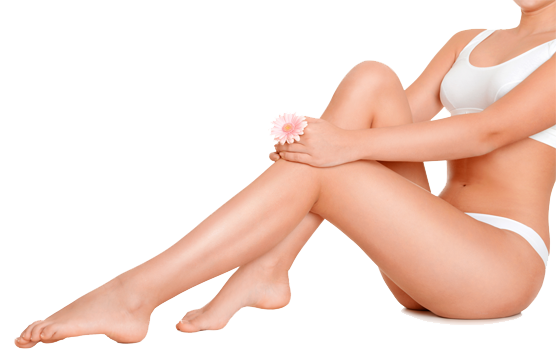Calves fat transfer in Tunisia
Calves augmentation by fat injection, also known as fat transfer to calves, is a cosmetic surgery treatment which acts on the volume of calves by injecting the patient’s clean fat in this body area. The fat is usually removed by liposuction areas such as saddlebags, abdomen, flanks, etc., and is re-injected into the calf to give it a rounded and well plumped appearance.
This intervention, which acts on the relief of the internal or external gastrocnemius of the calf, is a recent technique that is gradually replacing the use of calf prostheses. Precisely for this particular technique increases the calf injection of own fat, you can choose a Plastic Surgeon qualified and recognized by the Council of the Order of Doctors in France and Tunisia: Dr. Shiraz Bouzguenda accompanying you in all pre and post surgical steps.
Among the main criteria of beauty of a woman is to have beautiful legs, thin and shapely. Unfortunately, our legs are rarely perfect.
The dream of every woman is to have beautiful legs with beautiful, shapely and sexy calves.
For women with skinny legs, but not sexy and shapely, the only way to remedy this is by cosmetic surgery: Increase in calves by lipofilling, this technique will give the relief a boost of lasting and definitive calves.
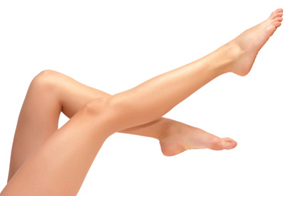
The calf anatomy consists of three main muscles: the two gastrocnemius muscles (internal and external) and the soleus, forming the posterior compartment of the leg.
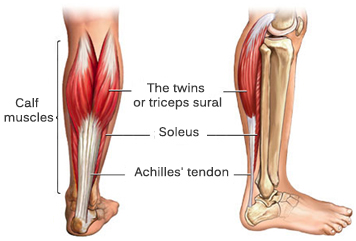
The development below normal calves (SGA) is often caused by the hypotrophie of the calf muscles and results in an unsightly appearance.
The problem may be due to:
- Insufficiently developed calf muscles, constitutional problem.
- Or, less commonly, illness or neurological or muscular trauma (polio sequel ...).
The problem can be bilateral as it can be unilateral.
Whether in women or in men, injecting fat calves is indicated for patients:
- Who have for calves with reduced default curve.
- Who explicit express a wish to have full calves, bigger, Curved and more accentuated reliefs.
- Who does not want a foreign body after an implant or prosthesis to a calf.
- Who have excess of fat masses at the saddlebags, abdomen, flanks, etc.
As for breast fat transfer, the final result of lipofilling calf offers a moderate increase in the relief calf muscle since part of the grafted fat is absorbed systematically (30-40%).
The condition can perform this intervention lipofilling calves is that the patient has enough fat donor site.
It is true that the skin of the legs is generally firm and tight, limiting its elasticity and therefore limits the amount of fat we can inject. However, when it comes to restore the volume of the calves, one needs only a few milliliters of fat.
So in order to regain a greater volume similar to calf prostheses, it is possible to conduct a second operation, 6 months to 1 year after the first fat injection procedure.
As buttock fat transfer, fat transfer to calves is a very advantageous intervention to reshape the calf hypotrophy among its advantages:
- Discard the risks related to the calves’ prostheses such as breaking, shell infection...
- Refine the silhouette by the associated liposuction.
- Discard the risk of rejection of the injected fat: it's autologous fat transfer.
- The necessity of discrete micro-scars.
- Consistency quite natural to the palpation of the calf.
- Natural Result.
Lipofilling calves can give volume and shapely calves through natural and definitive technical grafting the patient's own fat, without the use of calf implants.
- It is required that the patient has donor areas of fat (the required amount of pure fat is at least 1 liter).
- Operative time lipofilling calf is longer than that of calf prosthesis (3 operating times).
- The result can be only moderate, with only one calf lipofilling session.
- Failure to perform a 2nd session of lipofilling, lack of donor areas of fat.
- Income Risk asymmetry due to different absorption of fat from 2 sides, requiring retouching.
- Risk of «fat necrosis» (fat necrosis) because of bad «engraftment», spontaneous resorption or requiring surgical excision.
- Risk of formation of oil cysts.
- Possible need to undergo a second or even third session after six months to a year after the first session of lipofilling calves to optimize the result.
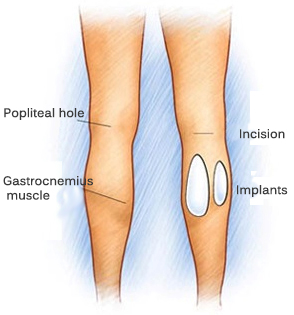
It is important to realize that the transplant of a significant amount of fat increases the risk of necrosis and oil cysts but also unnecessarily depletes the fat reserves of the patient.
In preparation for your surgical procedure, your cosmetic surgeon will ask you to:
- Quit smoking before surgery to promote better healing.
- Avoid taking aspirin, certain anti-Inflammatory drugs.
- Undergo a pre-operation balance sheet required for general anesthesia.
- Stop oral contraceptives one month before the operation.
- Anaesthetic Type : lipofilling calf requires general anesthesia.
- Hospitalization : 1 night of hospitalization is expected to calf lipofilling.
Sampling fat from one area, only thin cannulas, 3mm and under, are used to that collection is as soft and atraumatic as possible. 2nd time: Treatment of fat: The fat is then separated from the bulk of the liquid and the oil by the process of centrifugation (Coleman).
En 2ème temps : Traitement de la graisse :La graisse est ensuite séparée de la majeure partie du liquide et de l'huile grâce au procédé de la centrifugation (Coleman).
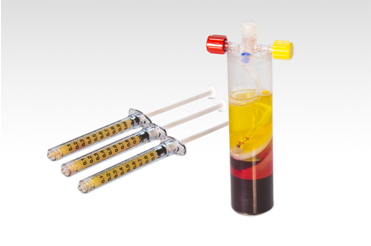
The fat is then grafted with much smaller cannulas as those used for picking. The fat must be placed one drop at a time and in many ways, to maximize the success rate.
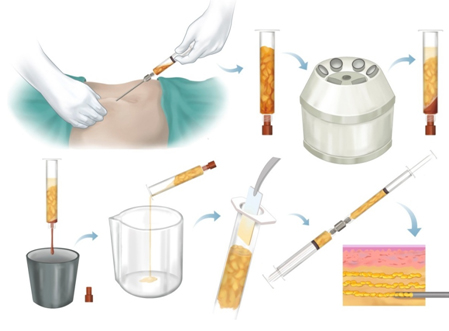
Immediately after lipofilling operation, calves are stretched and sore with some walking difficulty for the first few days. Some edema and bruising can be expected.
The normal physical activities can be resumed a few days after the lipofilling surgery. However, vigorous physical activities should be delayed until six weeks after surgery.
Following your fat transfer procedure on the calves, you will notice the results immediately, most obviously after the first two weeks when the swelling will be gone. The results will continue to improve over the next few months after absorption of fat (estimated at 30-40 %).
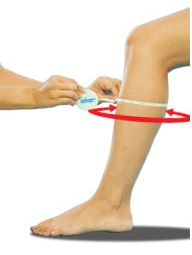
The result of lipofilling calf is permanent, the transplanted cells remain alive; however, it is important to maintain a stable weight.
The final result of lipofilling calves, which must be assessed after 4 to 6 months, is a mild improvement in appearance and a moderate increase in volume. The results are subtle, natural look with a curved shape and a more pronounced curve, plus a resculpted silhouette.
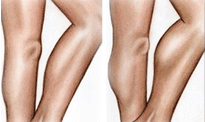
As with any cosmetic surgery, there are risks of infection, numbness, hematoma or related to general anesthesia.
The specific complications of fat transfer or lipofilling are:
- Unequal and asymmetrical results, in fact, there is no way of knowing how many fat cells survive. The surgeons often over-correct on the area, but this in itself can be a negative side effect.
- Risks necrosis of fat excess by injection.
- Risks of oil cysts.
The price of calves’ augmentation by lipofilling Tunisia is 1900 €.
Calf augmentation abroad
- Procedure: Increase shapely calves by autologous fat grafting technique.
- Anaesthesia:General
- Operating Time:2:30 to 3:00
- Duration of hospital stay :two nights
- Duration of the overall stay: 7 days
- Convalescence:7 - 10 days
- Price: 1900 €
